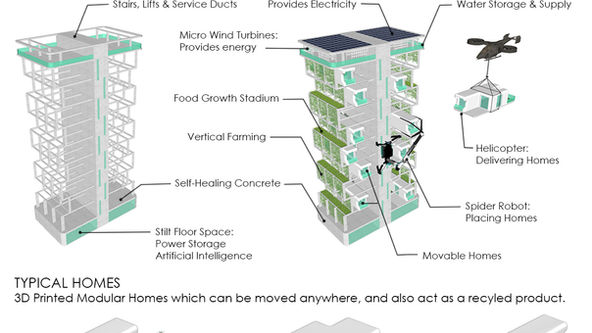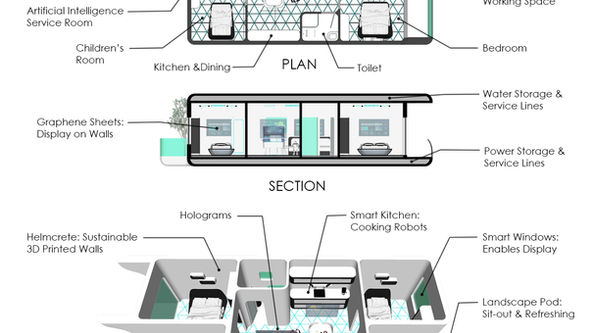Roving Homes
Yameen Tilal
India


© Yameen Tilal

© Yameen Tilal


© Yameen Tilal
In 2122, the entire world will be built on technology, and it will be the age of artificial intelligence, which will be able to foresee issues that may impact the world in the future and take precautions while designing and using materials and processes.
India would be the most populous nation as the world's population grows, and housing demand will rise as a result. Since land is in high demand, it would be difficult to supply individual homes on individual lots. The solution is to use vertical communities.
In order to reduce pollution in the construction industry in the future, it will be necessary to limit demolition and the production of Portland cement. To do this, sustainable building materials will need to be used, and structures that minimise destruction will need to be constructed.
If the house is mobile, we may relocate it or sell it if we want a new one, saving money on demolition costs and continuing the life cycle of the automobile. This process will lessen pollutants and improve environmental sustainability so that new structures can incorporate this idea.
The construction of homes and other structures will be entirely replaced by 3D printing in the future thanks to the energy-efficient, long-lasting, and sustainable properties of materials like self-healing concrete and helm concrete.
Inside the home, everything will be digital, including the use of VR, AR, and holograms for television viewing. Graphene sheets can be used to finish walls, windows, and other surfaces because they can show all digital data. Useful flooring options include kinetic tiles, which produce electricity with each footfall. Exhale fans and LED lights were designed using cutting-edge technology.
When cars are flying in the future, it will be even easier to access high rise structures directly through vehicles thanks to macro level structures that can accommodate micro level units in vertical settlements.



